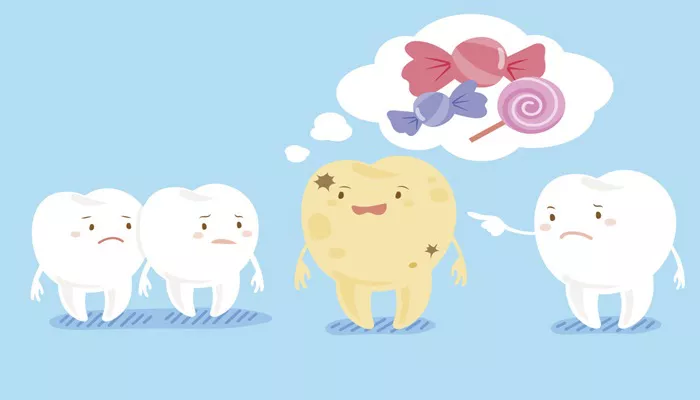Maintaining good oral hygiene is essential for overall health, yet many individuals overlook the importance of effectively removing bacteria from their teeth. Bacteria can lead to plaque buildup, cavities, and gum disease, all of which can cause significant discomfort and health issues. This essay will explore various methods for removing bacteria from teeth, emphasizing the importance of regular dental care and effective home practices.
Understanding Oral Bacteria
The Role of Bacteria in Oral Health
The mouth is home to a diverse community of bacteria, some of which are beneficial while others can be harmful. Harmful bacteria thrive on food particles and sugars left on teeth, producing acids that erode enamel and lead to tooth decay.
Understanding this balance is crucial for effective oral hygiene.
The Formation of Plaque
When bacteria combine with food particles and saliva, they form a sticky film known as plaque. If not removed through regular brushing and flossing, plaque can harden into tartar, which can only be removed by a dental professional. Tartar buildup can lead to more severe dental issues, including gingivitis and periodontitis.
Daily Oral Hygiene Practices
Brushing Your Teeth
Brushing is the first line of defense against oral bacteria. Here are key points to consider:
Frequency: Brush at least twice a day—once in the morning and once before bed. This helps remove food particles and plaque.
Technique: Use a soft-bristled toothbrush and fluoride toothpaste. Brush for at least two minutes, covering all surfaces of the teeth—front, back, and chewing surfaces.
Angle: Hold the toothbrush at a 45-degree angle to the gum line. This technique helps to effectively remove plaque from the gum line.
Flossing
Flossing is essential for removing bacteria from areas that a toothbrush cannot reach, particularly between the teeth and under the gum line.
Frequency: Floss at least once a day. Many people find it helpful to floss before brushing, as it can loosen food particles and plaque.
Technique: Use about 18 inches of dental floss. Wrap it around your fingers, leaving a few inches to work with. Gently slide the floss between your teeth, curving it around each tooth in a C-shape.
Mouthwash
Using an antimicrobial mouthwash can help reduce bacteria in the mouth, providing an additional layer of protection.
Choosing a Mouthwash: Look for mouthwashes that contain active ingredients like chlorhexidine or cetylpyridinium chloride, which can help kill bacteria.
Usage: Rinse with mouthwash after brushing and flossing. Follow the instructions on the label for the recommended duration.
Professional Dental Care
Regular Dental Check-ups
Visiting a dentist regularly is crucial for maintaining oral health. Professional cleanings remove tartar buildup and help prevent gum disease.
Frequency: Most dentists recommend check-ups every six months, but individuals with specific dental issues may require more frequent visits.
Examinations: During check-ups, dentists will assess your oral health, provide cleanings, and offer advice on improving your hygiene routine.
Dental Sealants
For additional protection against bacteria and decay, dental sealants can be applied.
What Are Sealants: Sealants are thin, protective coatings applied to the chewing surfaces of back teeth. They act as a barrier against food particles and bacteria.
Who Should Get Them: Sealants are particularly beneficial for children and teenagers, but adults can also benefit from them if they are prone to cavities.
Dietary Choices
Reducing Sugar Intake
Bacteria thrive on sugar, making it essential to limit sugary foods and beverages.
Avoid Sugary Snacks: Foods like candy, cookies, and sugary drinks can significantly increase the risk of cavities.
Choose Healthier Options: Opt for fruits, vegetables, and whole grains, which are less likely to contribute to plaque buildup.
Staying Hydrated
Drinking water helps wash away food particles and bacteria, supporting oral health.
Water Intake: Aim to drink plenty of water throughout the day. This is especially important after meals to help rinse away any remaining food particles.
Fluoridated Water: If possible, drink fluoridated water, as fluoride helps strengthen tooth enamel and fight cavities.
Additional Tips for Bacteria Removal
Chewing Sugar-Free Gum
Chewing sugar-free gum can be an effective way to reduce bacteria and promote oral health.
Stimulating Saliva Production: Gum chewing increases saliva flow, which helps wash away food particles and neutralize acids produced by bacteria.
Xylitol Benefits: Look for gum containing xylitol, a natural sweetener that can inhibit the growth of bacteria responsible for cavities.
Avoid Tobacco Products
Tobacco use can significantly impact oral health, increasing the risk of gum disease and oral cancer.
Quitting Tobacco: If you use tobacco, seek help to quit. This will not only improve your oral health but also your overall well-being.
Manage Stress
Stress can negatively affect oral health, leading to habits like teeth grinding and neglecting dental care.
Stress Reduction Techniques: Engage in activities that reduce stress, such as exercise, meditation, or hobbies. This can help improve your oral hygiene routine.
Conclusion
Removing bacteria from teeth is essential for maintaining oral health and preventing dental issues. By following a consistent oral hygiene routine that includes brushing, flossing, and using mouthwash, individuals can effectively combat harmful bacteria. Regular dental check-ups and professional cleanings play a crucial role in maintaining oral health.
Additionally, making informed dietary choices and adopting healthy habits can further enhance your efforts to keep bacteria at bay. By prioritizing oral hygiene, you can enjoy a healthier smile and overall well-being.
Related topics:

